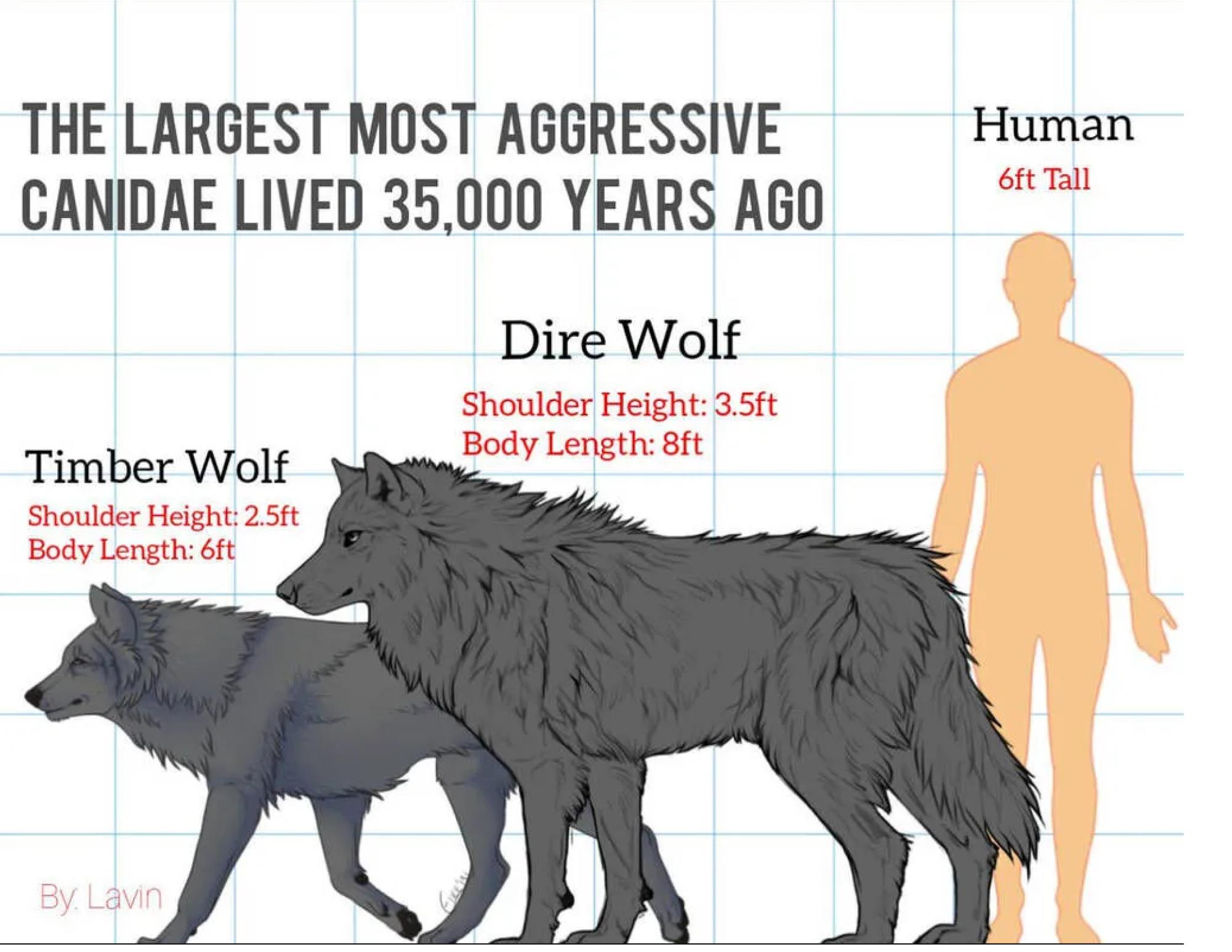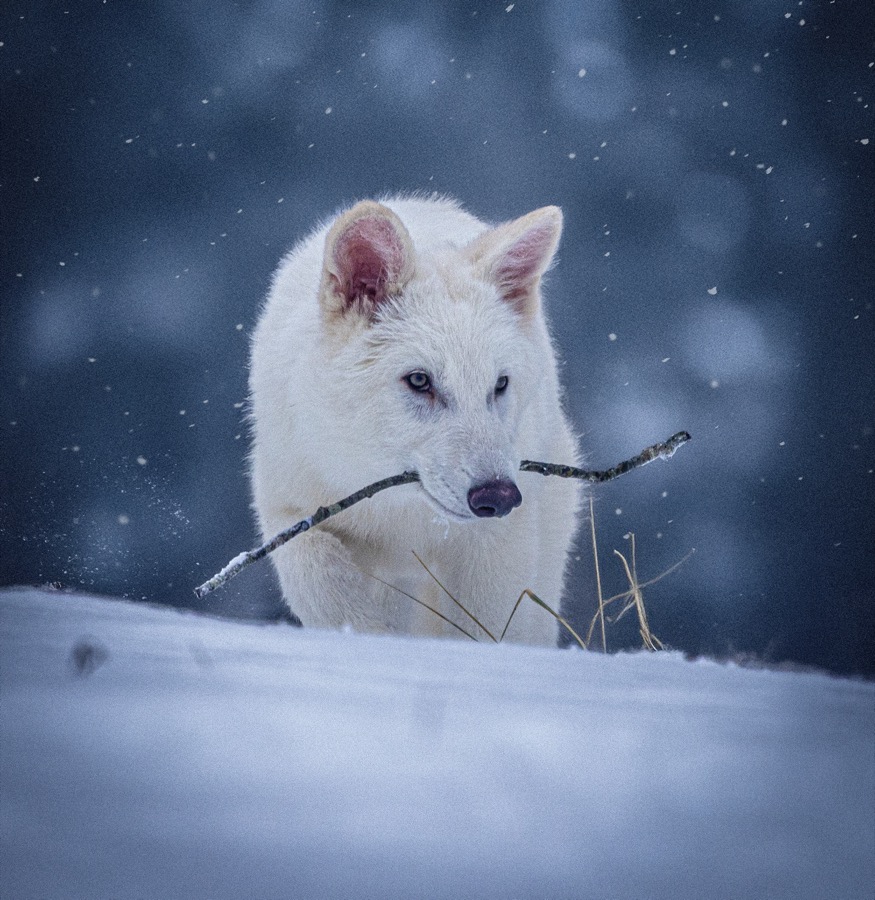For the first time, scientists say that with the help of biotechnology, they have successfully made a species de-extinct, bringing the dire wolf back thousands of years after its extinction.
Colossal Biosciences, a biotech company based in Dallas, says it has effectively birthed three dire wolves using revolutionary science. The dire wolves were an ancient canine species known for their impressive size and skill. They roamed across North America and South America during the last Ice Age before going extinct over 12,500 years ago. Dire wolves lived during the late Pleistocene Epoch and the Holocene Epoch. The epochs are connected through the interglacial period, which followed the retreat of glaciers and rising global temperatures. The wide distribution of dire wolves suggests they adapted to and inhabited many habitats, from grasslands, coastal open woodlands, to tropical wetlands. Based on the analysis of dire wolf fossils, the fossils suggest horses were an important prey for the wolves, alongside ground sloths, bison, and camels.
Colossal CEO Ben Lamm said the team extracted DNA from a 13,000-year-old tooth and a 72,000-year-old skull. They used the DNA to analyze the species’ full DNA set, or genome, to create healthy dire wolf puppies. According to The Associated Press, company scientists used gene-editing technology, CRISPR, and genetically modified cells from a living gray wolf. Colossal used the modified cells to create embryos, transferring them to the surrogate, a domestic dog.
Love Dalen, a professor at Stockholm University and advisor to Colossal, said, “There’s no secret that across the genome, this is 99.9% gray wolf. There is going to be an argument in the scientific community regarding how many genes need to be changed to make a dire wolf, but this is really a philosophical question.” Although the dire wolf embryos were created with the help of extracted ancient dire wolf DNA, grey wolf genes make up the majority of the wolf.
Three litters of dire wolf puppies were born. The first two litters yielded two males, Romulus and Remus. The third was born months later, a female whom they named Khaleesi.
The company currently does not have a set-in-stone plan for the wolves and where they will go. The wolves, however, will not be released into the wild, and here’s why. Jerry Coyne, a professor at the University of Chicago, said that if the revived dire wolves are let loose into the wild, they will have no pack or social group, and it would be hard for them to live and adjust to other species and environments they haven’t been exposed to. Since their time, settlements, cities, and countries have been established. Releasing the wolves into the wild risks exposure of the species to currently endangered species, and humans, which can be a risk for the wolves and humans alike.
According to CBS News, Colossal has big plans for the future. The company says its de-extinction program and process could help support global conservation efforts. “Preserving, expanding, and testing genetic diversity should be done well before important endangered animal species like the red wolf are lost,” said Harvard geneticist and co-founder of Colossal, Dr. George Church. In 2021, Colossal announced its plans to start de-extinction for the woolly mammoth. So far, they have been testing with and altering mouse embryos. With the alterations, they created mice with long, woolly hair, naming the creation the “Colossal woolly mouse.”
Colossal has worked on several projects, including the dire wolves and the woolly mammoth, striving to use their advanced de-extinction technology to bring back previously extinct species, aiming to protect endangered species, and rebuild ecosystems.

You can find more information about the Colossal company at De-extinction Projects, Facts & Statistics | Colossal.
Sources:
The dire wolf, which went extinct 12,500 years ago, revived by biotech company – CBS Detroit
De-extinction Projects, Facts & Statistics | Colossal












